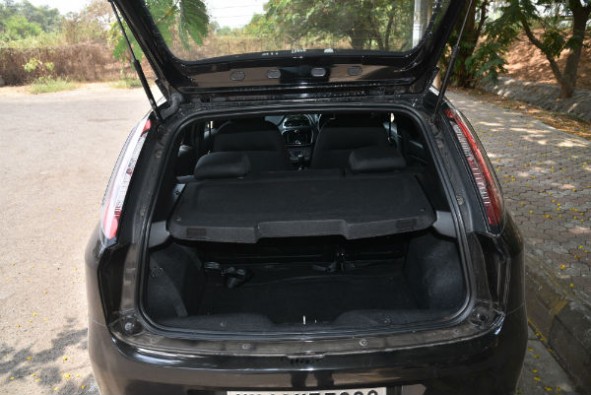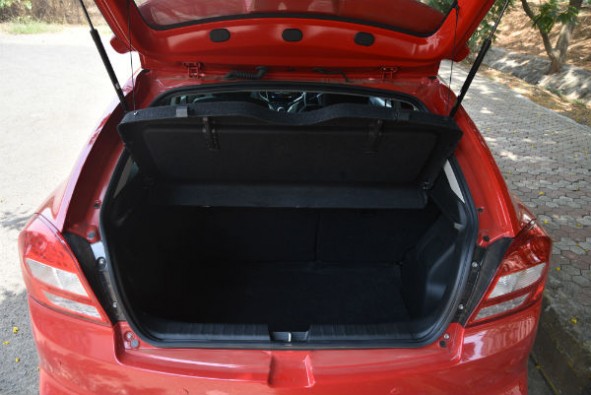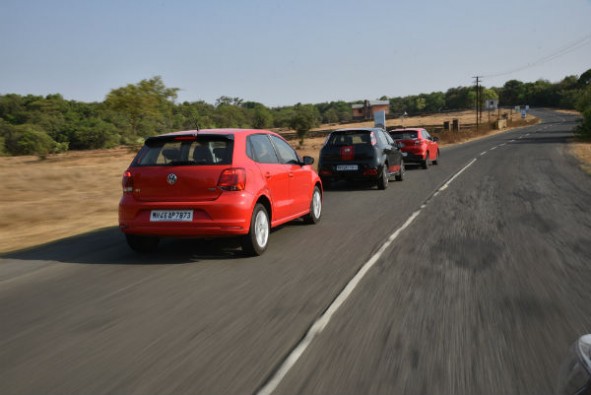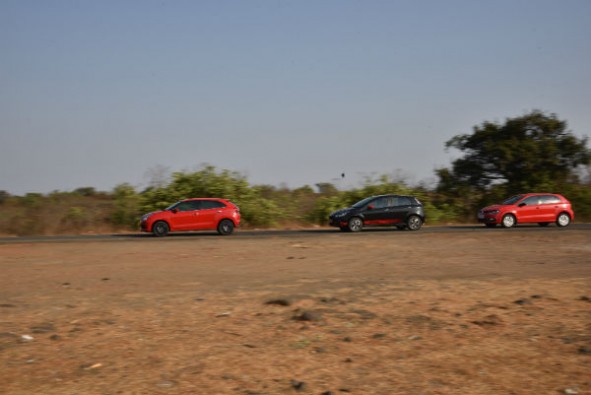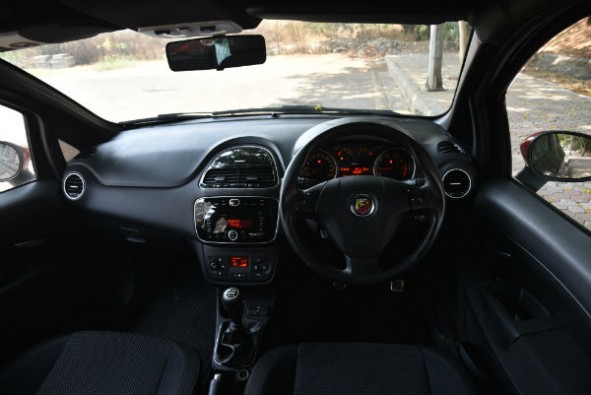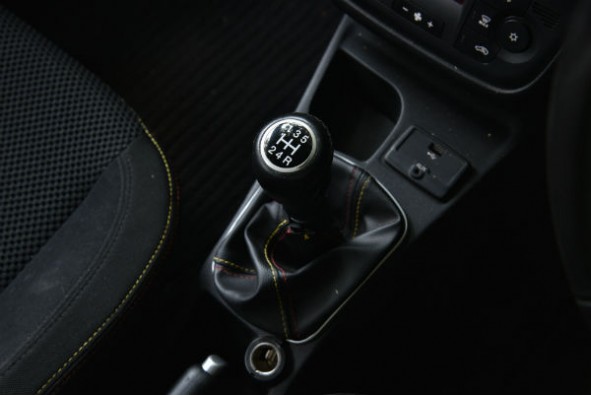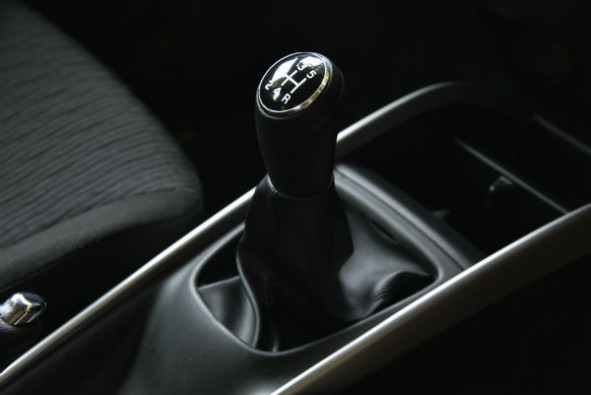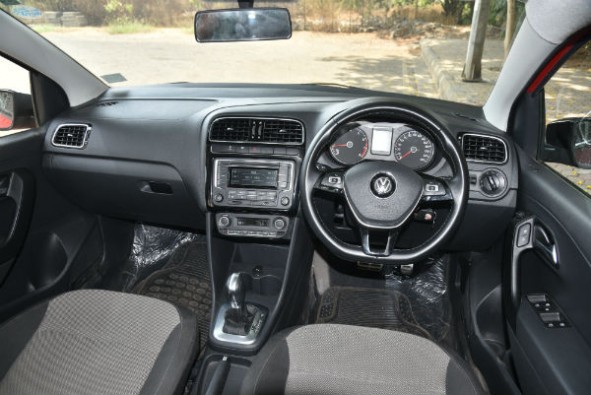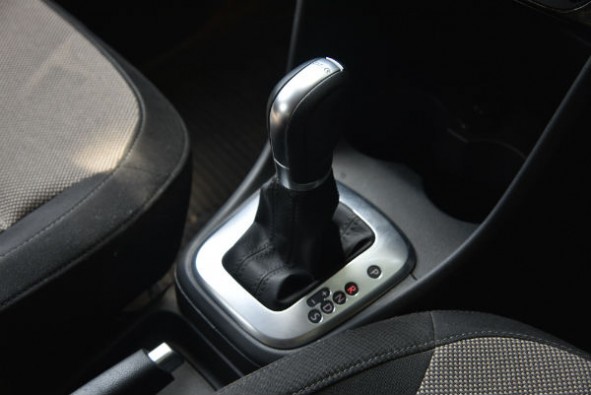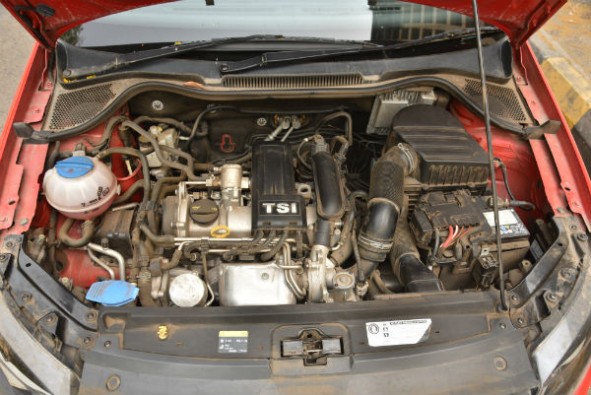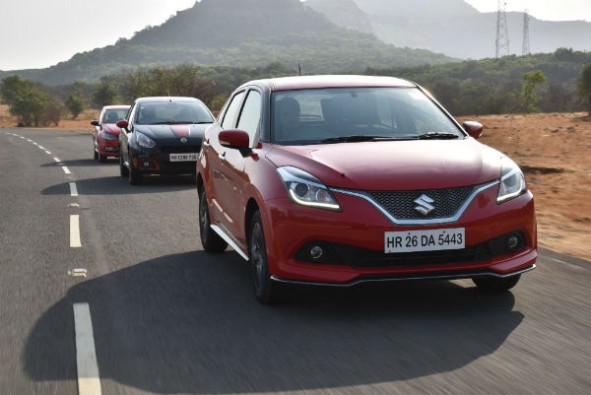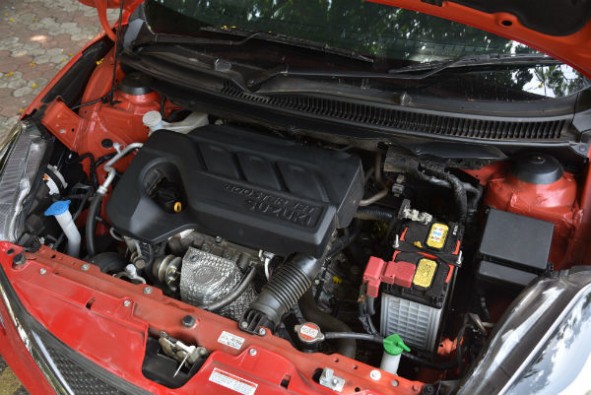Carmarkers are slowly, but steadily looking past practicality, and fuel economy figures and are adding doses of excitement to their offerings. But let’s not forget that these are still mainstream brands and mainstream cars, so these ‘performance’ versions are still practical, somewhat efficient, comfortable and good value. All three have been spruced up with some added zing to entice petrolheads.
Power Torque
VW’s Polo GT TSI is a driver’s favourite and it even has the convenience of an automatic gearbox. It’s direct-injection turbo-petrol engine is mated to a DSG double-clutch automatic gearbox – this unit is normally found on more expensive cars.

The Abarth Punto’s more old-school - it uses the simple formula of ‘more is more’. It’s got the Linea’s 1.4-litre T-Jet turbo-petrol motor under the hood and it’s been re-tuned to provide a crazy 145hp. The suspension has been lowered a bit, disc brakes have been added at the rear and the car has Abarth stripes and logos all over to identify it as the ‘hot hatch’ version.

The Baleno RS also comes with a manual gearbox, sporty add-ons and rear disc brakes like the Abarth, but power from its 1.0-litre Boosterjet direct-injection motor is closer to the VW.
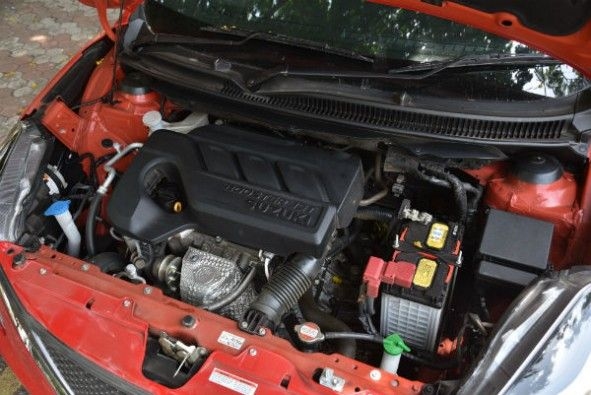
So, for somewhere between ₹9 lakh and ₹10 lakh, which one should you pick?
On the outside
These three cars look starkly different. The GT TSI looks almost identical to a standard Polo, except for some black mirror caps, a black spoiler, slightly different alloy wheels and a few badges that tell it apart. In contrast, the Abarth is covered in sporty bits that you could spot from a mile away. It’s even got some rather aggressive-looking alloy wheels. The Baleno RS is somewhere mid-way in terms of styling. It gets blacked-out headlamps, black wheels and a gunmetal grey mesh grille to complement the subtle side skirts and chin spoiler. The rear bumper gets a nice, chunky valance to remind you it means business.
On the inside
The interiors aren’t too different on all three cars from their standard siblings. The Abarth goes a little further. It gets red and yellow contrast stitching on the seats and gear lever and instead of Fiat badging, it gets Abarth ones all over. The cabin is all black too. The Polo and the Baleno have the same interiors as the top-spec variants in their respective ranges.

Each car has its advantages and disadvantages. The Baleno is the most spacious and practical and is the best equipped, with goodies like automatic headlamps and the 7.0-inch SmartPlay touchscreen, with Apple CarPlay and navigation. Both the Fiat and the VW come with touchscreens of their own, the test cars used here didn’t have them fitted though.
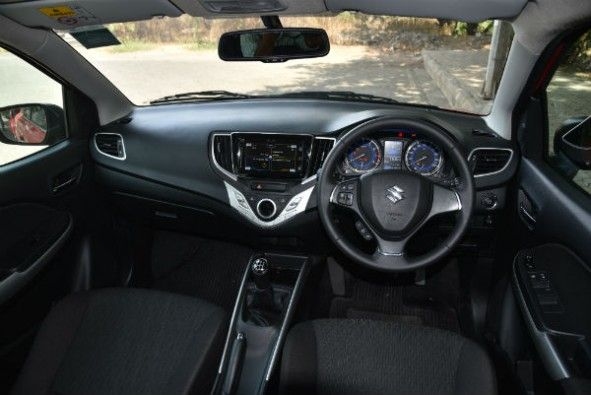
From behind the wheel
From the driver’s seat, which is where we assume you’ll be most of the time, the Polo is the best. Its nice driving position, snug seats, good visibility and a flat-bottom steering wheel to hold on to aid this experience. It also has the best built interior - rich-feeling materials all over and great fit and finish. And although it does not have paddle shifters for better control of the gearbox, you can use the gearlever switch through the gears. The Baleno’s low driving position is good too, but the seats are a bit too flat and soft, which is fine for everyday driving, but you tend to slide around in them if you’re driving this car aggressively.
Thanks to its racy colour scheme and flamboyantly designed dash, the Punto sucks you into the whole ‘Abarth’ experience. The seats are nice and snug, but the driving position is awkward – you’re sat too high up. The pedals aren’t exactly where you’d expect them and the steering wheel is canted upwards and doesn’t adjust for reach. Fit and finish is the worst of the three. It’s not high on practicality either. There’s just one cupholder and a tiny dash-top bowl for knick-knacks. The rear seat isn’t great either but there is a rear AC vent though. The Polo isn’t great in these respects either, it’s got the smallest boot and a pretty tight back seat, but it’s got a good enough number of cubbyholes. The Baleno, which is the newest car here, has all the modern bases covered. It’s a proper four (if not five) seater and has a boot that can eat up your weekend luggage.

The engine in the Baleno makes 102hp and 150Nm. Still, thanks to its incredibly light weight, the RS has a healthy power-to-weight ratio of 107.3hp per tonne. The Polo’s 105hp and 175Nm too sounded disappointing at first, but when you drive it, you’ll notice how smoothly and rapidly this car makes progress. VW’s DSG double-clutch automatic is also arguably one of the best gearboxes in the world. Which brings us to the Punto - 145hp and 212Nm were just unheard of in a car of this price until the Abarth came along - no other hatchback until the Rs 25 lakh mark even comes close. And even though this car is old, the Fiat does have an inherently solid chassis setup, and even an old-school hydraulically assisted power steering.
There is a very slight lull while the turbo spools up in the Baleno, but once you cross 1,600rpm, the car shoots forward. From then on, it pulls really cleanly all the way to 6,000rpm. This is aided by a really light clutch and precise gearbox. But, you have to remember to keep the engine on the boil to maintain a constant momentum.
The VW does feel a bit anticlimactic once you hop out of the other two - there’s no drama to it at all. The engine is much smoother, the gearbox handles shifts seamlessly it’s ruthlessly efficient, robbing you of some of the fun.
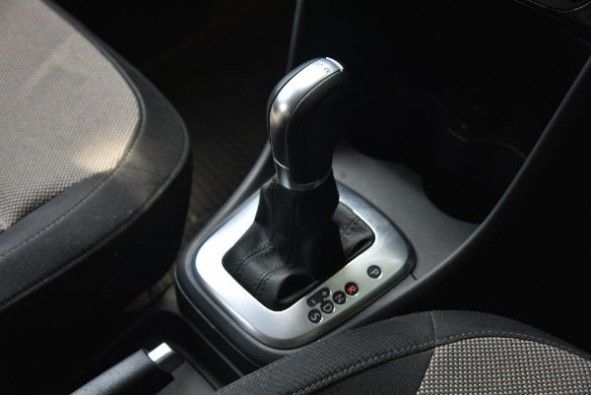
Of course, the 175Nm does pin you back in your seat when you put your foot down, but there’s very little accompanying noise or anything else to make this feel a bit more engaging. The good thing is that there’s access to all that performance, without making the slightest effort.
The Abarth’s clutch is on the heavy side, and the gearshift action feels chunky and rubbery. The Fiat’s steering offers good feedback in the bends.You’ll find the tyres being overwhelmed again, but it’s something you can learn to manage. This car is a thrill-a-second hatchback – a bit of a handful, but so much fun in the process.
Now the Polo’s powertrain may not lend itself to the kind of involvement you get from the other two, but it has to be said, this is a fun handler. Turn-in is sharp and you can hustle this small hatch around bends quite easily.
Maruti has made some welcome changes to the chassis, steering and suspension with the Baleno RS, that will roll out in all new Balenos too. This has added about 60kg to the kerb weight, so the suspension has been stiffened to compensate. The steering also has clearly been retuned as well. The RS is quite a bit more fun to fling around than the original Baleno. It also rides a little better than before, and you certainly don’t get tossed around over undulations like you used to. The Polo’s ride too is really supple and takes all but the sharpest of bumps in its stride. The Punto rides the best of the lot.
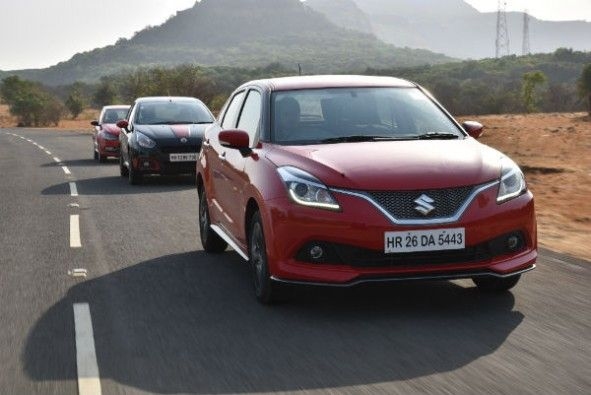
So, how quick are these cars? The Maruti manages a pretty impressive 10.25sec to 100kph, which makes it quicker than the Polo’s 11.02sec. From a standstill though, the Abarth just creams the other two with a staggering 9.32sec 0-100kph time!
The Polo GT TSI has a superb Jekyll-and-Hyde ability to go from comfortable, automatic city runabout one moment, to zippy little firecracker the next. Its performance is just so easy to access that even those who aren’t all-out petrolheads will find some enjoyment in it. If you want the best of both worlds, this could be your pick.
Which one to pick?
The RS is a hopped-up turbo hatch that has proper space, a big boot and all the amenities we’ve come to demand these days. It also manages to be quite nice to drive, and at ₹8.69 lakh (ex-showroom, Delhi), it’s the cheapest of this lot too. The Baleno RS, however, still tilts more to the side of sensible to be an all-out entertainer.
The Abarth Punto is in no way practical. There’s hardly any storage spaces, the ergonomics are terrible, the infotainment system is buggy and some of the controls are counter-intuitive. But as a mechanical package, it is just spot on. The motor puts a grin on your face and the steering just sucks you into the driving experience. Plus, it looks like a hot hatch should.
If this was a test of the standard cars, the aged Punto would come dead last. But here, where performance and excitement are graded, it’s the Abarth that’s a proper hot hatch.



